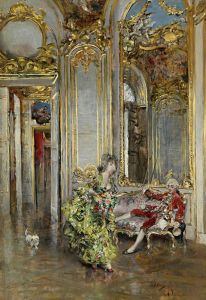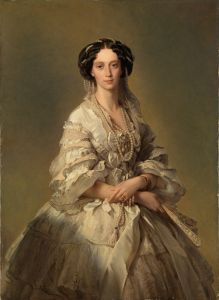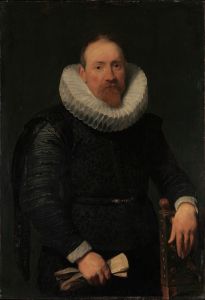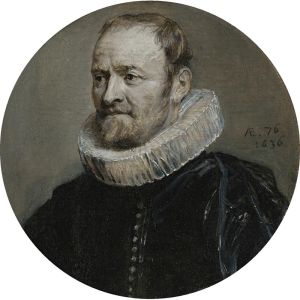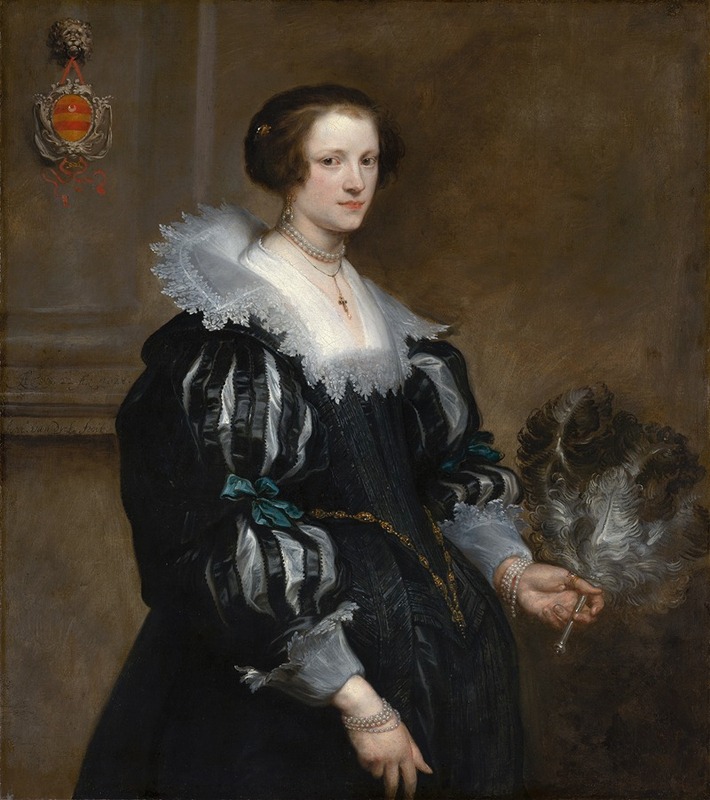
Portrait of Anna Wake
A hand-painted replica of Anthony van Dyck’s masterpiece Portrait of Anna Wake, meticulously crafted by professional artists to capture the true essence of the original. Each piece is created with museum-quality canvas and rare mineral pigments, carefully painted by experienced artists with delicate brushstrokes and rich, layered colors to perfectly recreate the texture of the original artwork. Unlike machine-printed reproductions, this hand-painted version brings the painting to life, infused with the artist’s emotions and skill in every stroke. Whether for personal collection or home decoration, it instantly elevates the artistic atmosphere of any space.
"Portrait of Anna Wake" is a painting by the renowned Flemish Baroque artist Anthony van Dyck. Van Dyck, born in 1599 in Antwerp, was a prominent painter who became famous for his portraits of European aristocracy and notable figures of his time. He was a leading court painter in England and a significant figure in the development of Baroque art.
The painting depicts Anna Wake, a member of the English gentry. Anna Wake was the daughter of Sir Isaac Wake, an English diplomat and scholar. The portrait is believed to have been painted around 1628-1630, during Van Dyck's first visit to England. This period was marked by Van Dyck's increasing reputation and his eventual appointment as the principal court painter to King Charles I.
In the portrait, Anna Wake is depicted with a serene and composed expression, characteristic of Van Dyck's style, which often emphasized the elegance and grace of his subjects. She is dressed in a richly adorned gown, indicative of her social status. The attention to detail in her attire and the delicate rendering of her features showcase Van Dyck's exceptional skill in portraiture.
The background of the painting is relatively simple, with a dark, neutral tone that helps to highlight the figure of Anna Wake. This technique was commonly used by Van Dyck to draw attention to the subject's face and attire, creating a sense of intimacy and focus. The use of light and shadow in the painting further enhances the three-dimensional quality of the portrait, a hallmark of Van Dyck's work.
"Portrait of Anna Wake" is part of Van Dyck's extensive body of work that includes numerous portraits of English nobility and royalty. His ability to capture the personality and status of his subjects made him one of the most sought-after portraitists of his time. Van Dyck's influence extended beyond his lifetime, shaping the development of portrait painting in Europe.
The painting is currently housed in the collection of the National Gallery in London, where it is accessible to the public. It remains an important example of Van Dyck's contribution to Baroque art and his impact on the tradition of portraiture.
Van Dyck's legacy as a portraitist is evident in the enduring popularity and admiration of his works. His portraits, including "Portrait of Anna Wake," continue to be studied and appreciated for their artistic excellence and historical significance.





